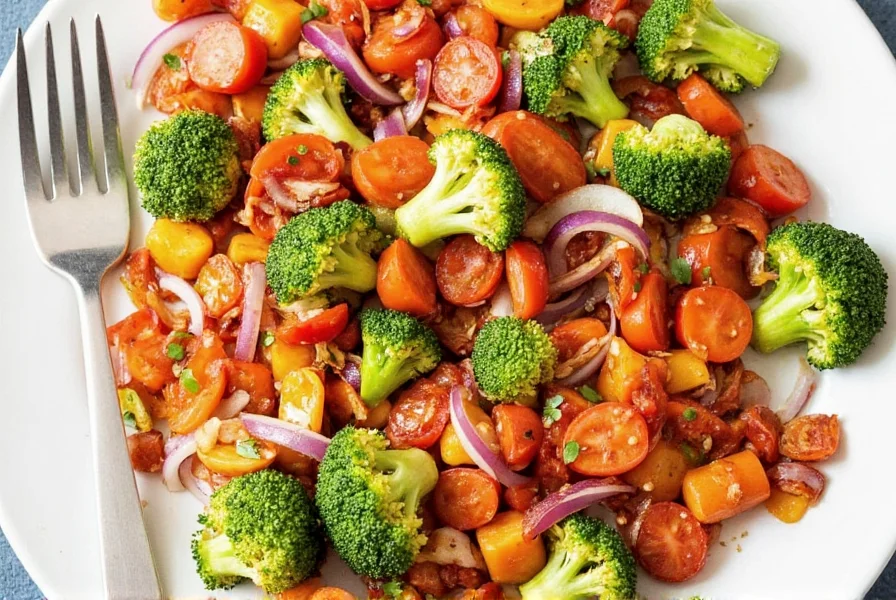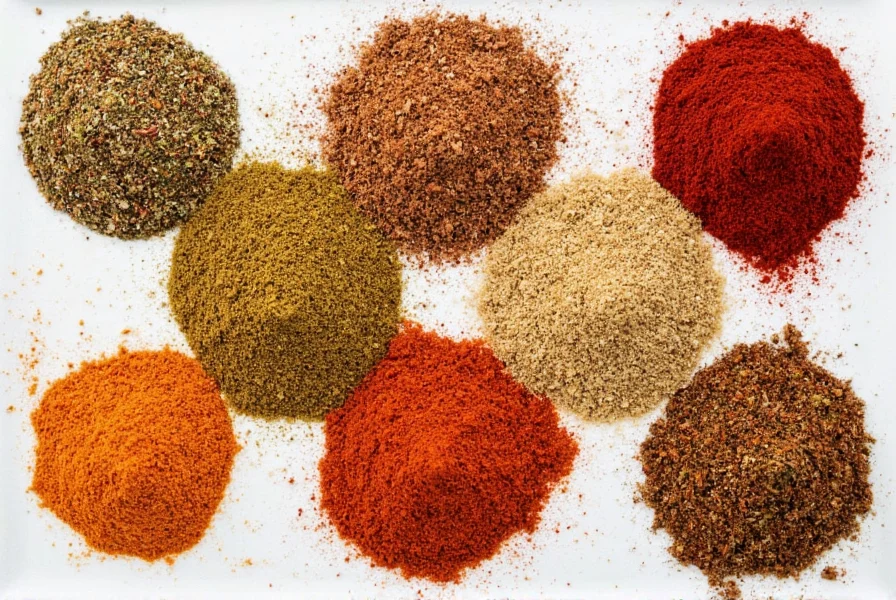Curry Powder Decoded: The Spicy Secret Behind Your Favorite Dishes!
Table of Contents
- Introduction: What Exactly Is Curry Powder?
- The Building Blocks of a Great Curry Powder
- Types of Curry Powder: From Mild to Fire-Infused
- How to Use Curry Powder Like a Pro Chef
- Buying Guide: Picking the Perfect Curry Powder
- Storing & Shelf Life Tips
- DIY Curry Powder: Mix It Up at Home
- Frequently Asked Questions
- Conclusion: Spice Up Your Life with the Right Curry Powder
Introduction: What Exactly Is Curry Powder?
Hold up! Before you toss that yellowish-orange spice into your next stew or stir-fry, have you ever stopped to ask what exactly is in this magical dust we call curry powder? Spoiler alert: it's not one single spice — it's more like a secret blend of spices that gives dishes their signature warmth, color, and complexity.
Unlike regional spices such as garam masala or ras el hanout, curry powder isn’t tied to one cuisine. Instead, it’s a British-invented mix meant to mimic Indian flavors back in the 18th century. Today, there are dozens of variations depending on where you go — from Thai green curry powder to Japanese kare rū (curry roux).
The Building Blocks of a Great Curry Powder
Curry powders can vary widely by brand and region, but most share a few core ingredients:
- Turmeric – Gives curry its iconic golden hue and has anti-inflammatory properties.
- Cumin – Earthy, nutty flavor; often described as the backbone of many spice blends.
- Coriander – Adds citrusy brightness to balance out heavier spices.
- Chili Powder or Cayenne – Brings the heat. Optional in mild versions.
- Ginger – Warming, aromatic, and essential for depth.
- Fenugreek – Has a slightly bitter, maple-like sweetness.
- Black Pepper – Enhances bioavailability of turmeric and adds subtle bite.
- Mustard Seeds – Often added for a nutty, tangy note, especially in Southern Indian recipes.
Depending on the type of curry powder, additional ingredients may include cinnamon, cardamom, cloves, fennel seeds, and even dried mango powder (amchur) for tartness.
Types of Curry Powder: From Mild to Fire-Infused
If you think all curry powders taste the same, think again! There’s a wide spectrum of heat levels and flavor profiles. Here's a quick comparison table to help you pick the right one:
| Type | Flavor Profile | Heat Level | Best For |
|---|---|---|---|
| Mild Curry Powder | Sweet, earthy, gentle warmth | ★☆☆☆☆ | Curries for kids, soups, creamy sauces |
| Madras Curry Powder | Peppery, sharp, tangy | ★★★☆☆ | Vegetable curries, lentil stews |
| Korma Curry Powder | Rich, nutty, mildly spiced | ★☆☆☆☆ | Coconut-based curries, yogurt sauces |
| Jalfrezi Curry Powder | Hot, bold, slightly smoky | ★★★★☆ | Stir-fried meats, paneer, bell peppers |
| Balti Curry Powder | Robust, aromatic, medium heat | ★★★☆☆ | Quick-cook meat dishes, street food |
| Thai Red/Green Curry Paste | Fruity (red), fresh/herby (green) | ★★★★★ | Curry soups, coconut milk dishes |
How to Use Curry Powder Like a Pro Chef
Curry powder is more than just an Indian takeout shortcut. It can be your secret weapon in everyday cooking. Check out these creative ideas:
- Add to Marinades: Mix curry powder with olive oil, lemon juice, and garlic for a vibrant rub for chicken or tofu.
- Enhance Grains: Stir a pinch into rice or quinoa while cooking for a fragrant base.
- Spice Up Roasted Veggies: Toss carrots, cauliflower, or chickpeas with oil and curry powder before roasting.
- Boost Egg Dishes: Sprinkle into scrambled eggs or avocado toast for a flavor lift.
- Create Signature Sauces: Combine with coconut milk, tomato paste, or yogurt for a quick sauce base.
- Upgrade Popcorn: Melt butter, mix with curry powder and a dash of salt, then drizzle over popcorn.
- Experiment with Desserts: Try a touch of korma-style curry in spiced chocolate or chai-spiced cake.

Buying Guide: Picking the Perfect Curry Powder
Not all curry powders are created equal. Here are some top picks for different needs and preferences:
| Product Name | Key Features | Advantages | Best For |
|---|---|---|---|
| McCormick Curry Powder | Classic Western-style blend with turmeric, coriander, cumin | Inexpensive, easily available, consistent flavor | Beginners, budget cooks, Americanized curries |
| BTC Madras Curry Powder | Spicier, contains chili, fenugreek, and black pepper | Vibrant flavor, great for authentic South Indian dishes | Experienced cooks, spicy lovers, restaurant-quality meals |
| Patak’s Korma Curry Powder | Richer profile with mace and nutmeg notes | Creamy, aromatic, ideal for dairy-based sauces | Slow-cooked curries, coconut milk dishes |
| Shan Chicken Masala | Aromatic with clove and cardamom undertones | Convenient for quick chicken curries | Busy cooks, takeout alternatives |
| Simply Organic Golden Curry Blend | Organic, non-GMO, with ginger and turmeric root | Great for health-conscious folks and smooth sauces | Golden milk lattes, wellness bowls, mild curries |
Storing & Shelf Life Tips
To keep your curry powder potent and flavorful, store it wisely:
- Keep in airtight containers away from light, heat, and moisture.
- Label each bottle with the date of purchase.
- Store whole spices separately if possible, grinding fresh when needed.
- Expect a shelf life of about 6–12 months for ground powders, longer for whole spices.
- Smell test: If it doesn't smell aromatic anymore, it's time to replace it.

DIY Curry Powder: Mix It Up at Home
Want to take control of your flavor? Making your own curry powder lets you customize the heat level, aroma, and balance to match your palate. Here’s a simple recipe for a versatile house blend:
Homemade Curry Powder Recipe
- 2 tbsp ground turmeric
- 1.5 tbsp ground cumin
- 1 tbsp ground coriander
- 1 tsp ginger powder
- ½ tsp black pepper
- ½ tsp fenugreek powder (optional for bitterness)
- ¼ tsp cayenne (adjust to taste)
- Optional: Pinch of cinnamon or nutmeg for warmth
Mix well and store in a dark glass jar. Toasting whole seeds before grinding enhances the depth of flavor.
Frequently Asked Questions
Q: Is curry powder the same as garam masala?
A: No. Garam masala is typically added at the end of cooking and includes warming spices like cardamom, cloves, and cinnamon. Curry powder is used earlier in the process and contains more turmeric and chili.
Q: Can I substitute curry powder with other spice blends?
A: Yes, but results may vary. A mix of paprika, cumin, coriander, and turmeric can mimic a basic curry powder. Adjust ratios to taste.
Q: Does curry powder really expire?
A: Ground spices lose potency over time. While they don’t technically expire, they do fade in flavor after 6–12 months.
Q: Which curry powder is the healthiest?
A: Look for organic options without additives or fillers. Blends high in turmeric (which contains curcumin) offer anti-inflammatory benefits.
Conclusion: Spice Up Your Life with the Right Curry Powder
Curry powder might come in a small shaker, but it holds the power to transform any dish into something unforgettable. Whether you're making a comforting korma or a fiery jalfrezi, the right blend can make all the difference.
So the next time you reach for that jar of curry powder, remember: it’s not just a spice — it’s a passport to flavor. Don’t be afraid to experiment, taste boldly, and keep your pantry stocked with a few good blends. After all, life’s too short for bland food!










 浙公网安备
33010002000092号
浙公网安备
33010002000092号 浙B2-20120091-4
浙B2-20120091-4